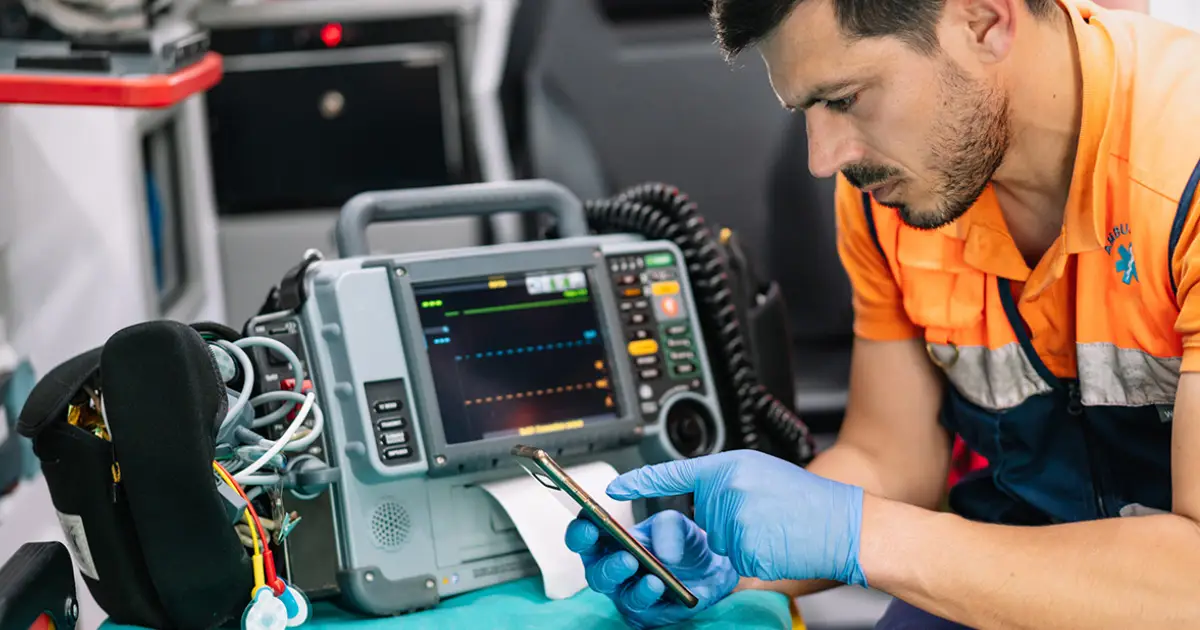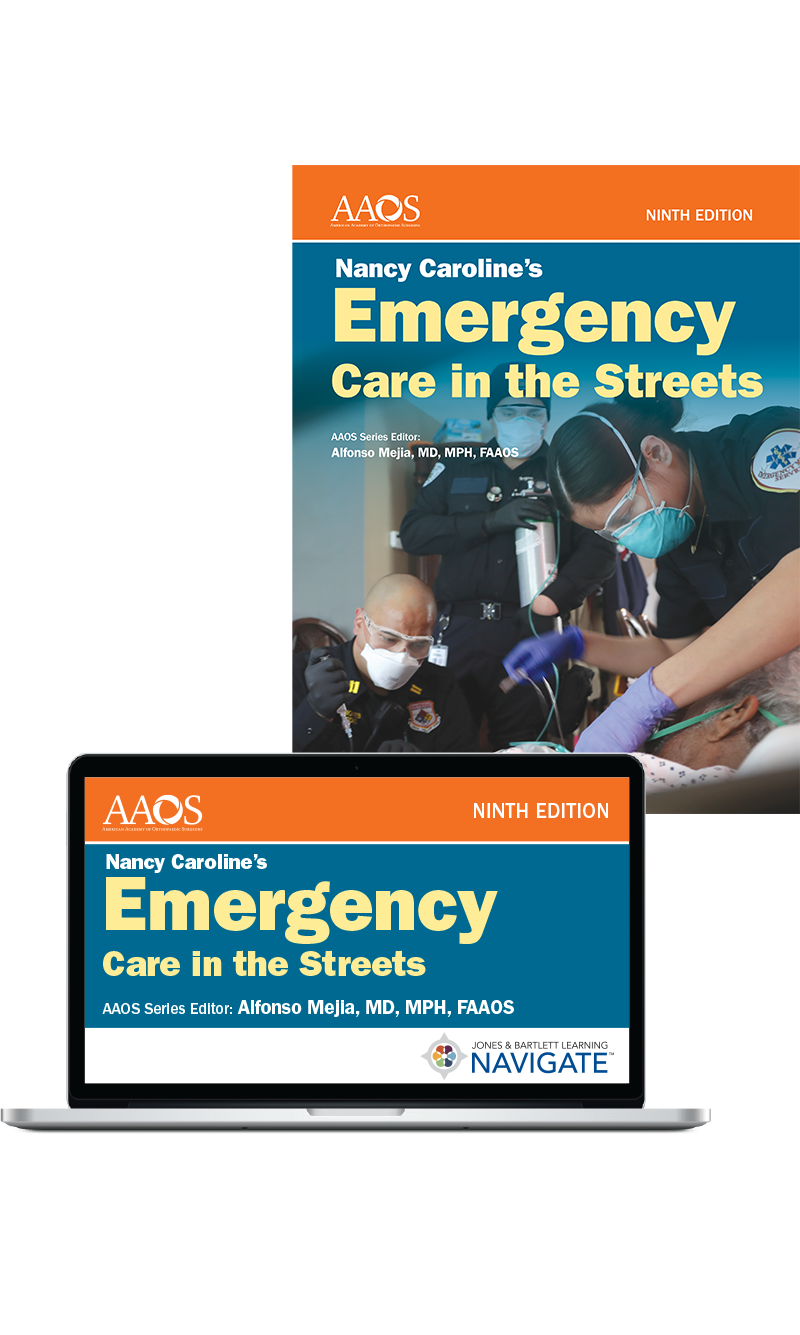Enhancing Paramedic Training Courses: Strategies and Insights for Instructors

Educators play a critical role in ensuring that future paramedics are engaged, skilled, and knowledgeable, with paramedic training being the basis for competent and effective emergency medical services (EMS).
From understanding the importance of improved training to exploring effective instructional strategies, this article examines how instructors can optimize paramedic educational programs, ensuring their students are successful in the classroom and in the field.
The Value of High-Quality Paramedic Training
As an EMS instructor teaching paramedic students, your goal is simple: Train your students to succeed through a paramedic training program and be ready to face the day-to-day challenges of being a paramedic. Often instructors choose to teach because of their passion for the industry, but there is an even more important reason paramedic instructors work to help students succeed. It comes down to a worker shortage in EMS.
Hundreds of thousands of EMTs and paramedics are going to be needed in the coming years. The Association of American Medical Colleges predicts a shortage of up to 86,000 physicians by 2036, along with an ongoing undersupply of ambulances. Additionally, a 2022 study from the American Ambulance Association reveals that 39 percent of part-time emergency medical technician (EMT) and 55 percent of part-time paramedic positions went unfilled because of a lack of qualified candidates.
It is important to recognize that instructors are losing up to 30 percent of potential paramedics during training for educational or personal reasons. And, an EMS training report reveals only 42 percent of students eligible for testing passed the National Registry of Emergency Medical Technicians (NREMT) exam.
With workforce shortages challenging the healthcare industry, a high-quality paramedic program is a conduit for learner retention and, eventually, on-the-job success.
Strategies for Paramedic Instructors to Boost Training Engagement and Results
1. Use Validated Exams
Assess paramedic students’ understanding and knowledge retention with reliable and standardized exams. These exams should measure trainee progress accurately and identify areas for improvement. Resources from trusted paramedic education providers like Public Safety Group offer valuable test prep for learners with questions written by subject matter experts. These assets offer students a better understanding of what to expect from certification testing.
2. Provide a Roadmap for Success
Learners need explicitly defined steps and guidelines to excel in their paramedic program, including effective study techniques and information on navigating and utilizing available resources. Students can benefit from studying with a combination of print and digital resources, practice tests, audiobooks, flash cards, and peer study groups.
3. Emphasize Practical Application
Students consistently want to know how their learning is applicable in the field. Find opportunities to demonstrate the real-world relevance of theoretical knowledge to enhance learner engagement and comprehension. This might involve incorporating case studies, simulations, videos showing providers working in the field, or hands-on practice for an emergency.
4. Optimize Resource Utilization
Your learning materials—from textbooks and online materials to multimedia tools—are valuable. Communicate how students can maximize the utility and effectiveness of provided resources to help them get the most out of the course.
Exploring the Value of Adult Learning Principles
Thinking about learning styles is changing. Individuals are not merely auditory, visual, or kinesthetic learners, according to recent reporting. Now we know that emergency medical service professionals do not learn exclusively in one specific way.
While they may have a preference, every learner benefits from hands-on application. The Journal of Language and Linguistic Studies reveals that experiential education increases student learning by 43 percent and success rate by 16 percent.
Paramedic program leaders should prioritize adult learning principles moving forward (i.e., emphasizing self-directedness, relevancy, active participation, and practical application of knowledge) to help every student succeed in their class and their careers.
Integrating Training Trends and Evaluating Progress
To keep pace with developments in the field and see positive results, instructors must keep an eye on emerging training trends, such as:
Introducing Simulation-Based Training
Incorporate realistic simulations of EMS operations to provide learners with hands-on experiences in a safe and controlled environment. This helps students develop practical skills, gain experience, and build confidence in delivering critical care in any emergency situation. Immersive drills include:
- Interactive virtual reality (VR) simulations
- Tabletop exercises for decision-making and team coordination
- Simulated disaster scenarios
- Realistic patient manikin practices
Emphasizing Lifelong Learning
NREMT switched to the National Continued Competency Program (NCCP) model of recertification to promote learning that spans an EMS provider’s entire career. Like physicians, nurses, and other health care professionals, EMS providers are required to take continuing education courses to stay updated and improve their skills throughout their careers.
Leveraging Technology and Improving Flexibility
EMS education is currently going through critical transitions, prompting changes in paramedic training and recertification programs. Some of these adaptations include blended classrooms, flexible learning options, and the integration of digital content (e.g., online classes, simulation labs, and videos).
Modern paramedic and EMT resources use small, digestible pieces that students can access with mobile phones. This approach aligns more closely with how learners consume information today, providing convenience and trackability for students and EMS program instructors.
How Can You Evaluate Student Progress?
To encourage more paramedic students to complete their training, educators use the following tactics:
- Quizzes: Regular quizzes can measure students’ understanding of EMS concepts, protocols, and clinical skills. This reveals what is currently working in the classroom and where there is room for improvement.
- Feedback forms: Educators can better understand whether resources are being optimized by actively seeking students' objective input on the learning experience, curriculum effectiveness, and instructor performance. They can also reveal where educators need to spend more time training.
- Skills assessments: Hands-on skills assessments, like practical demonstrations and simulations, allow instructors to review paramedic students’ proficiency in executing EMS tasks—from patient assessments to CPR. Structured checklists can help inform skill mastery levels.
Nancy Caroline's Emergency Care in the Streets, Ninth Edition
The Ninth Edition offers cutting-edge, evidence-based content that meets or exceeds the most current scientific recommendations developed by the International Liaison Committee on Resuscitation (ILCOR) and the ECC Guidelines established by the American Heart Association and other resuscitation councils around the world.
Instructors: Request More Information